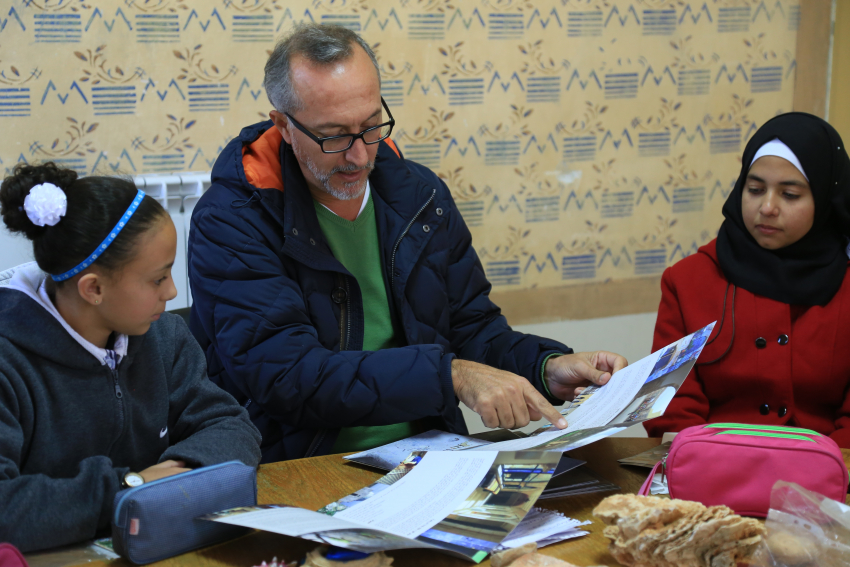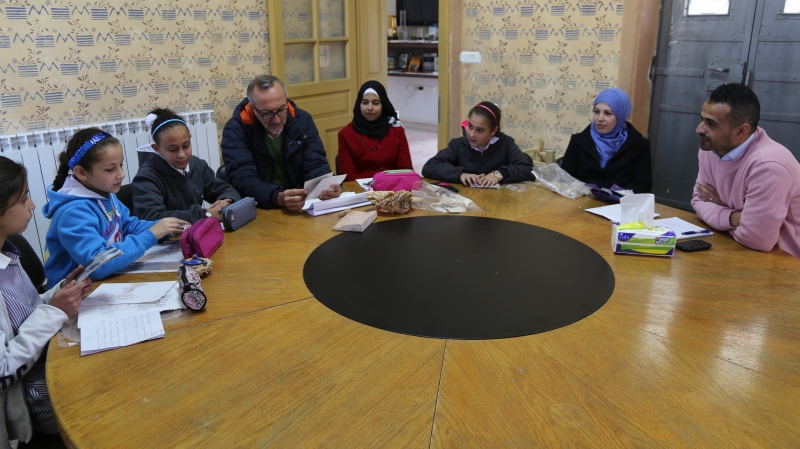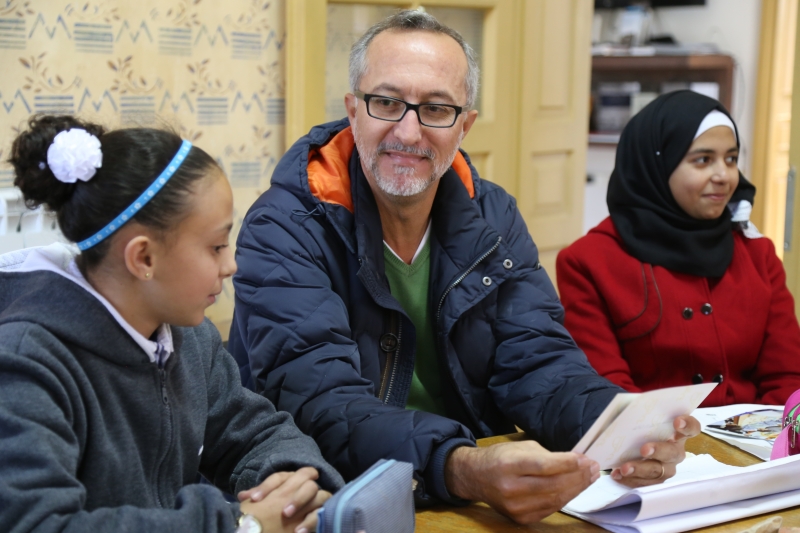
Saja, Eelaf, Inas, Raneem and Sadeel are sixth graders from the village of Yabrood. Recently, the five young women were busy, outside their classroom, in a formal meeting with Mr. Khaldun Bshara, the Director of Riwaq Center for Architectural Preservation. In the meeting room, they sat, in their blue-striped school uniforms, to a table covered with papers and preliminary schemes for the next phase of their project – the Interactive Fossil Museum in their village, Yabrood, to the north-east of Ramallah. They were seeking to draw on Riwaq’s expertise in the field of architectural restoration.

Project Background
The group gave an overview of the project, in which participated dozens of girls since its outset. It all started when their schoolteacher, Suhad Sayyed, transformed a science textbook lesson on fossils into a ‘Project-Based Learning’ experience, seven years ago. She moved the learning experience, traditionally based on memorization and conventional exams, outside the classroom, using new techniques such as drama, art, documentation and research as well as the Mantle of the Expert approach.
“Here, we went searching for fossils,” said Saja, pointing to a picture. “We thought every stone was a fossil at first!” She explained that by “we”, she meant her classmates and by “sisters”, the older students who are in the 12th grade now and who had started the project when she was in the first grade (and are still part of it). “Without them, our sisters, and everything they taught us, we would not be here today,” she repeated.
In the last seven years, the project managed to incorporate tens of schoolgirls and to start public dialogue around it in the village; mothers and grandmothers joined in the efforts for fossil collection, especially during the olive harvest season, the students visited libraries for more resources and hosted local and international experts. With artists, they made plaster ‘fossils’ to learn more about what real ones looked like. They then designed a logo for their project and held an interactive exhibition on fossils in Ni’lin, which was preceded by a fossil search tour in Ein Qinya organized by the students for a number of visitors so they could live the students’ experience before the visit.
The Old Mosque Turned Museum
It became necessary to find a place for storing and displaying the fossils and turning them into interactive science exhibits. The old mosque was the best place for the job, but the idea initially faced resistance from the mosque’s imam; he feared the place would lose some of its sanctity, if turned into a museum.
The girls did not give up though. They presented their ideas and the work they had done to the imam and gained his approval – he even joined the town and its local council in the building’s restoration, cleaning and provision with water and electricity. They all volunteered in creating a new space that belonged to them all.

Riwaq, represented by Mr.Bshara, gave its preliminary approval to look into the building’s needs early next year. Riwaq is a leading organization focused on the documentation and revival of old architectural sites. Unlike the conventional approach to restoration, which deals with each building separately, Riwaq’s methodology consists of exploring broader civil contexts through the preservation of collective heritage.
Vision and Mission
The Fossil Project is a Professional Development initiative by AMQF’s Programme for Educational Research and Development (PERD) that uses a Project-Based Learning approach. The Programme’s researchers are currently working with the schoolgirls and their teacher to develop a clear vision and mission for the museum, as well as a management plan and a slogan.
On Wednesday, the group met with Malek Al-Rimawi, Director of the Languages and Social Sciences Track in AMQF, and Abdel Karim Hussein, a coordinator and researcher at AMQF, who both oversee the project.
The next phase of the project will feature workshops for students and parents that aim to start a discussion around the concept of the museum and the potential of transforming it into a productive working space that combines local arts and the fossil theme. This should turn the museum into a hub for experimentation and interaction rather than an exhibit for passive spectators. The project hopes to achieve this by cooperating with the local community, other Qattan programmes and projects, such as the Science Exhibit Development Team at the Walid and Helen Qattan Science Education Project, Qattan’s Public Programme and the Culture and Art Programme.
